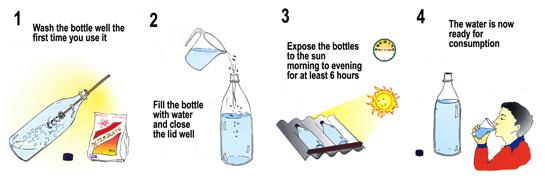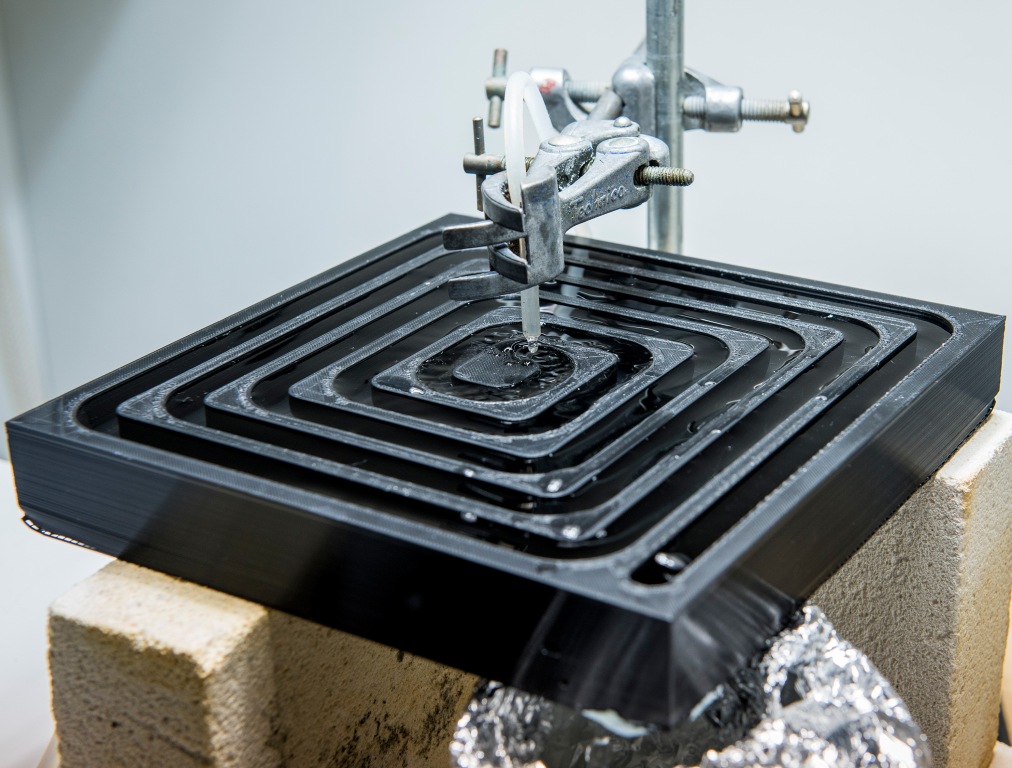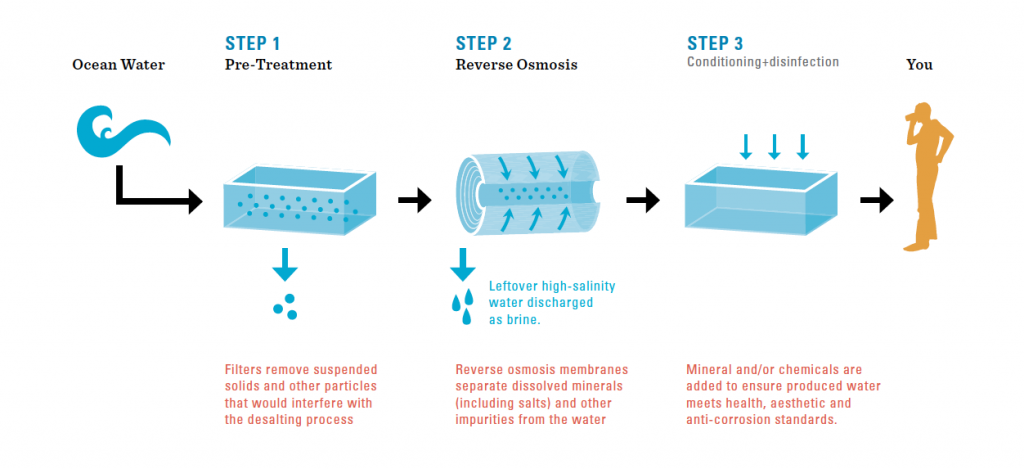A hobby 3D printing project from a multidisciplinary team at the University of Bath, UK, has turned into product development that could help provide clean drinking water to communities in parts of Asia, Africa, and Latin America.
The plastic slab with specially designed water channels has undergone multiple prototypes, and is now seeking methods of mass production for entry into the market.
Solar powered water
The maze-like design of the device is created on the principle of solar water disinfection (SoDis). In SoDis, heat and ultraviolet light from the sun are harnessed to kill the harmful microbes living in contaminated liquid. Common PET bottles are often used for this purpose, but they do not offer people an effective long term solution.

The University of Bath’s device is designed for multiple uses potentially over an indefinite period of time. The plastic slab is exposed to the sun and heated to a temperature capable of killing bacteria. Water is then added, running through a channel of a specific length and depth that determines how well it is purified by the end.
A slab of 40 cm x 40 cm is estimated to be able to treat up to 35 litres of water per day, which is the same volume as an average sized backpack.

Clean water for $6.40
Dr. Emma Emanuelsson, a lecturer in chemical engineering at the University of Bath, is leading the project. In an article for The Chemical Engineer she comments on development so far, saying,
The 3D printing allows us to rapidly produce different prototypes so we can see which one works best. Every prototype will have an issue with it. That’s the benefit of 3D printing, to rapidly generate something, test it, see what we get, use these results and then print another one.
Scale prototypes of the device have been made with the help of Paul Shepherd in civil engineering, who provides material expertise, and Aurelie Charles of the social and policy sciences department who has previously worked in Malawi. Working with the device, Charles has created a system where water is transferred between buckets that can easily be attached to the side of a house. Excluding the cost of the buckets, the set up should cost no more than $6.40 to produce.
Emanuelsson adds,
This is why collaborations are so great. In terms of having a multidisciplinary project, in terms of expertise, we are completely complementary. I could never do what social sciences are doing, I couldn’t do what Paul’s doing. I think this is one of the reasons this project works so well, because we are all taking it forward as a team better than any of us could have done individually
Not a drop to drink
In a world where around one fifth of the world’s population live in regions where water is scarce, there is a desperate need to find more clean-water solutions. With a specialized Water Innovation and Research Centre, the University of Bath has been selected for an international project addressing the challenges to the quality of drinking water in Mexico.
As a nation so close to the sea, one of the leading methods of introducing more clean water to Mexico is through a process of reverse osmosis.

At the Water Innovation and Research Centre researchers have 3D printed filters that remove salt from water. The approach has also been seconded by the Sonora Institute of Technology, whose research is supported by the Mexican National Science and Technology Council.
For all the latest 3D printing news, subscribe to the most widely read newsletter in the 3D printing industry, follow us on twitter and like us on Facebook.
Featured image shows the 3D printer water filtration device under development at the University of Bath. Photo by Rob Breckon



